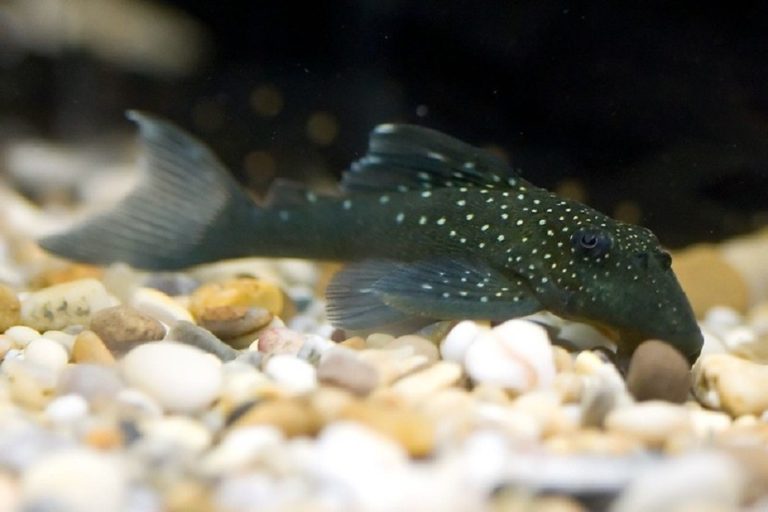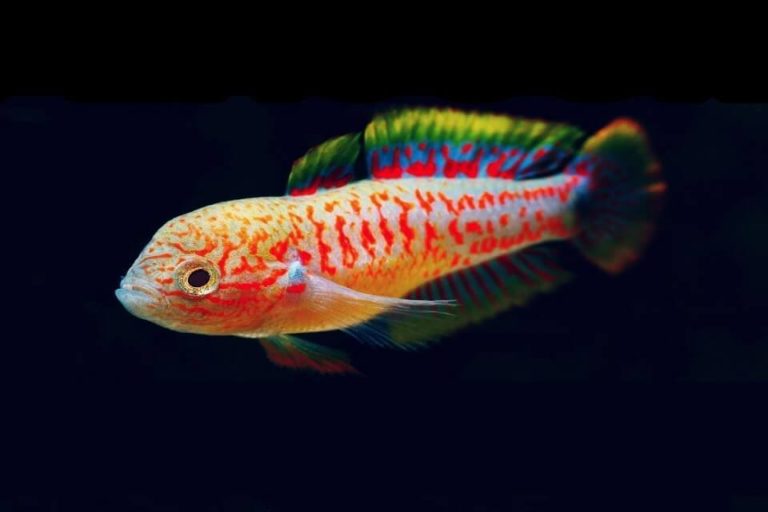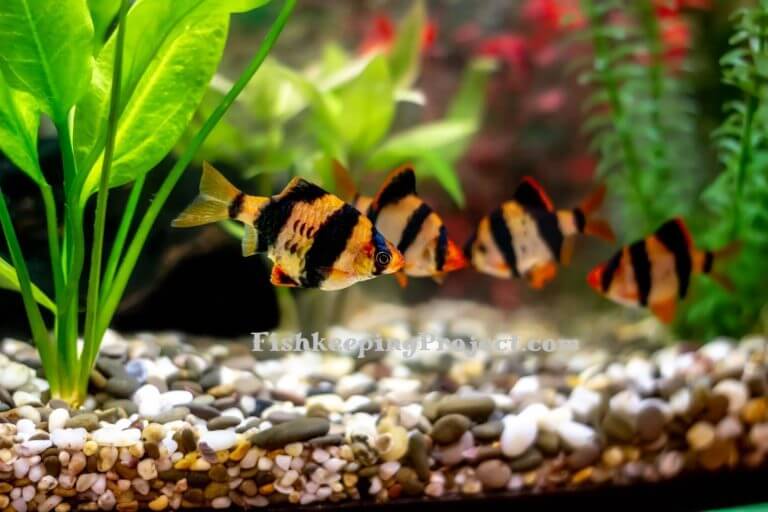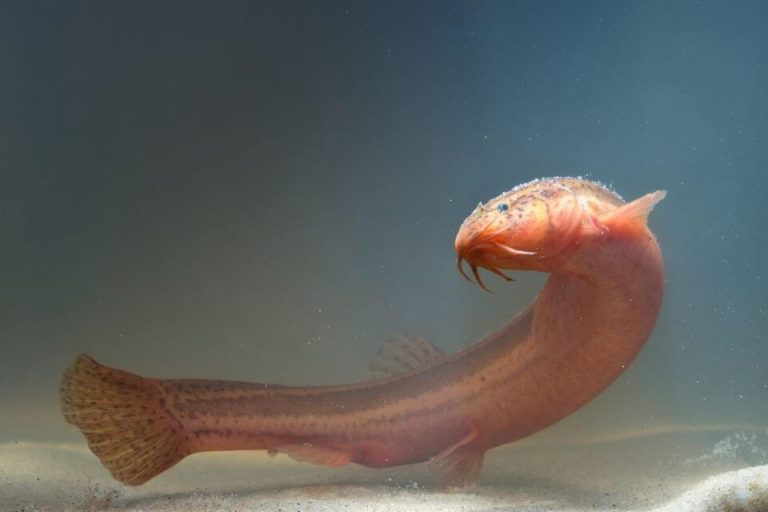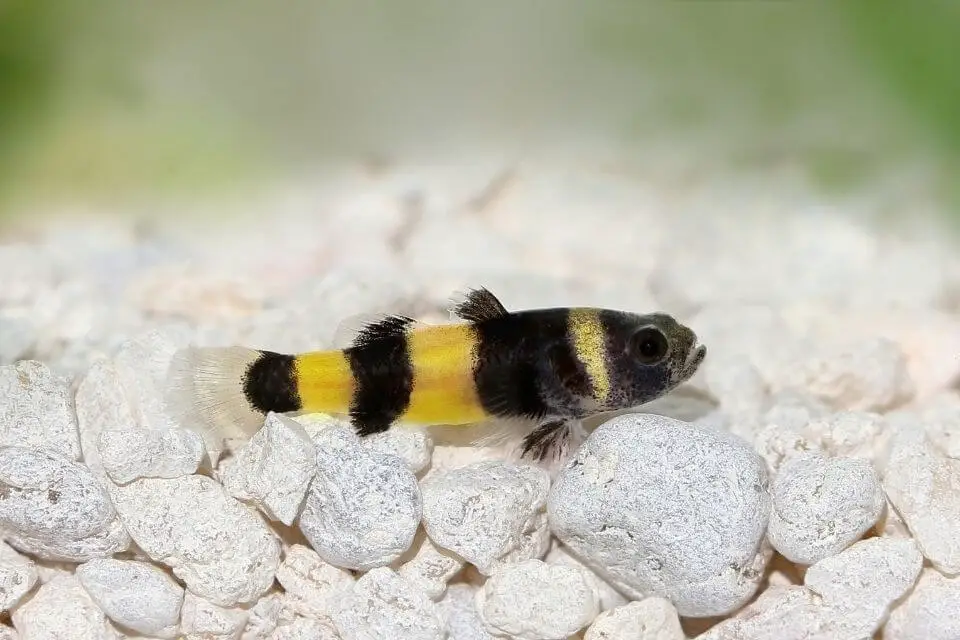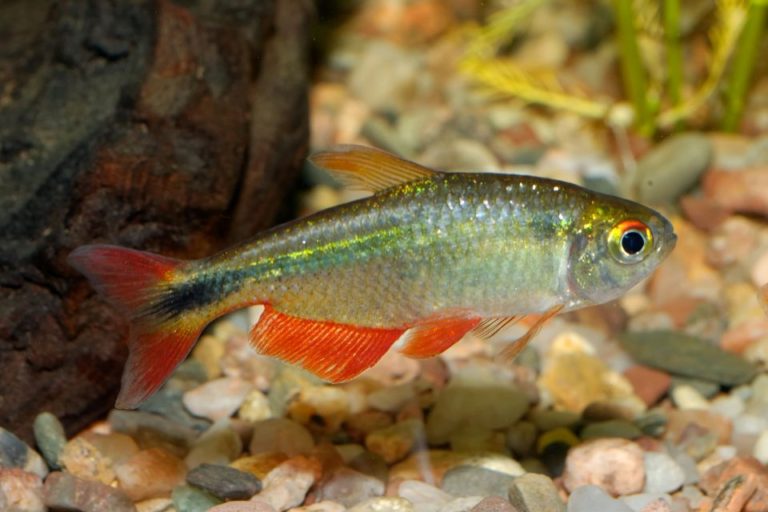Cherry Shrimp Care: Tank Mates, Tank Size, Food and Breeding

Cherry Shrimp is a great addition to a smaller size fish tank and it will enhance the beauty of your underwater space. They are one of the most popular freshwater Crustaceans species in the aquarium trade.
For good reason! In this Cherry Shrimp care guide, we will discuss everything you need to know about keeping them in your tank. We will be discussing their care requirements, diet, breeding habits, and more!.
So if you’re thinking about adding some Cherry Shrimp to your tank, keep reading!
| Quick Facts: | |
|---|---|
| Common Names | Cherry Shrimp, |
| Origin | Slow moving water bodies in the Estern parts of China |
| Family | Atyidae |
| Scientific Name | Neocaridina davidi |
| Care Level | Easy |
| Temperament | Peaceful |
| Social | Community friendly |
| Diet | Omnivore |
| Size (average) | 1 - 1.5 inches |
| Lifespan | Up to 2 years |
| Breeding | Egg layer |
| Minimum Tank Size | 5 gallons |
| Tank Setup | Freshwater, sandy or smooth gravel substrate, including driftwood, rock, clay pots, and caves for hiding places. Avoid bright lights. Use a lot of aquarium plants. |
| Tank Temperature | 68 – 78 °F (20 – 25 °C) |
| Water Hardness | 4 - 6 dGH |
| Water pH Level | 6.5 - 8.0 |
Species Overview
The Cherry Shrimp is a freshwater shrimp from the Atyidae family and is also known by its scientific name Neocaridina davidi (syn. Neocaridina denticulata sinensis).
This species of shrimp originates from Taiwan and can be found in many different color morphs, including red, yellow, blue, black, green, and brown.
They are a very popular species of shrimp for both beginner and experienced aquarium hobbyists due to their easy care requirements and peaceful nature. They are commonly known as tank cleaners and are very good at eating algae and leftover food from fish.
Additionally, Cherry Shrimp are very active and fun to watch as they go about their day-to-day activities in the aquarium.
Cherry Shrimp Size
Cherry Shrimp size is something that varies greatly between different varieties of them. The Neocaridina denticulata sinensis, for example, only grows to be about one inch long.
The Neocaridina denticulata davidi, on the other hand, can grow up to 1.5 inches in length. In terms of width, Cherry Shrimp are usually about a quarter of an inch wide.
The females are generally larger than the males because of the extra responsibility of carrying eggs. Average Cherry Shrimp size can grow up to 1.5 inches for females while the males are a little bit smaller at about an inch or so.
Cherry Shrimp Lifespan
The average Cherry Shrimp lifespan is about 1 to 1.5 years, but some have been known to live up to two (2) years with proper care. However, some Shrimps do not survive the transition from the wild to captivity.
With a careful and successful transition, you are guaranteed that your Cherry Shrimp will have a long and healthy lifespan.
Cherry Shrimp Colors And Appearance
As we know, Cherry Shrimp is one of the most popular shrimp species kept in aquariums. They are well known for their bright red coloration, which can vary from deep maroon to pale pink.
There are also many different color morphs of Cherry Shrimp, including yellow, orange, and even blue! The species are sought after due to their color varieties mostly their marbling brown shades.
The brighter and the more red the shrimp, the more valuable it is. Cherry Shrimp are a relatively small species of shrimp, only growing to be about an inch or so in length.
They have a long, slender body shape with long legs and antennae. Both sexes of Cherry Shrimp have a pair of claws on their front legs, which they use for defense and to capture prey.
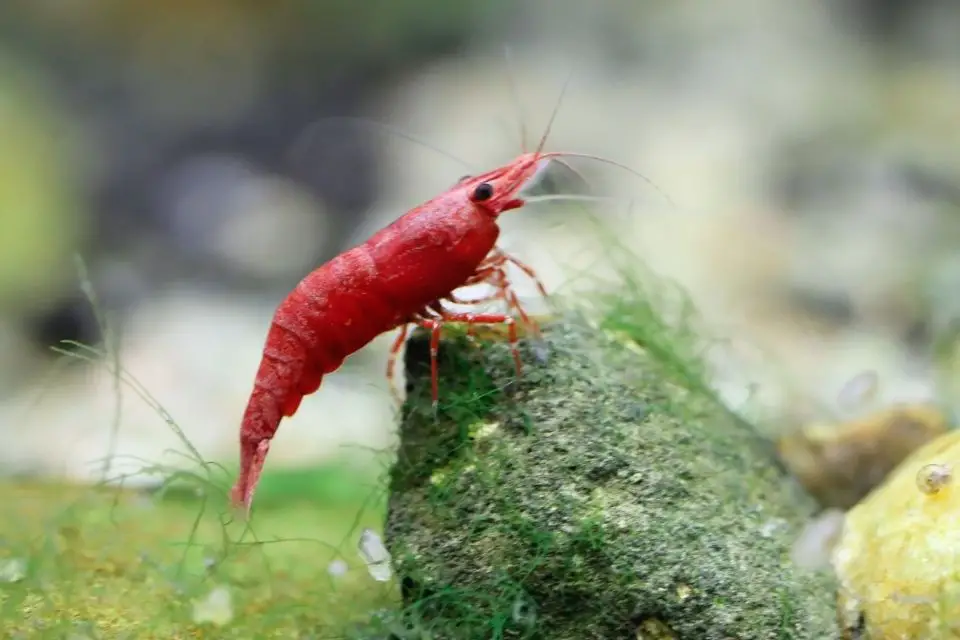
Moreover, shrimps have gills on either side of their body which they use to breathe underwater. Besides being smaller than females, males also have smaller claws and more curved abdomen.
You can determine the sex of your shrimp by looking at the shape of its underside; males will have a more V-shaped abdomen while females will have a flatter, U-shaped abdomen.
Behavior & Temperament
Cherry Shrimp are peaceful and relatively easy to care for. They make great additions to nano and planted aquariums, and are often used as cleaners.
Cherry Shrimp are not known to be fin nippers and get along well with most other peaceful aquarium inhabitants. They are active and interesting to watch and make a great addition to any shrimp-only tank or community aquarium.
When with their mates, they tend to be rather shy and reclusive. While not known to be aggressive, Cherry Shrimp will sometimes fight with each other for dominance.
This is more common in males and is usually not a problem unless the tank is overcrowded. If aggression does become an issue, it can be resolved by adding more hiding spots and/or decreasing the number of shrimp in the tank.
Cherry Shrimp Care
Cherry Shrimp are easy to care for and make a great addition to any nano aquarium. They are peaceful, and hardy, and will help keep your tank clean by grazing on algae and detritus.
Cherry Shrimp will do best in an established aquarium with plenty of hiding places and soft, acidic water. When it comes to their health, Cherry Shrimp are very resilient and can tolerate a wide range of water conditions.
– Cherry Shrimp Tank Size
It can do well in a small tank as long as it is at least five (5) gallons. However, if you want to keep more than a few shrimp, we recommend a 10 gallons tank or larger.
Opting for a bigger tank is advantageous because it provides the shrimp with more places to hide and forage, and also allows you to keep a greater variety of plants. Plus, a larger tank is simply more aesthetically pleasing.
– Cherry Shrimp Tank Setup
Hobbyists planning to own Cherry Shrimp will require an ideal tank set up to ensure the shrimp’s survival and well-being. The following are some tips:
The substrate: Cherry Shrimp do well in both freshwater and slightly brackish water. A good substrate for them to live in would be something that is soft and will not damage their delicate exoskeletons such as sand, small pebbles, or smooth river rocks.
For instance, you can go for Fluval Stratum, which is a natural clay gravel rich in minerals. Also, because these Shrimp are scavengers, having a substrate that can hold onto bits of food and detritus will be beneficial for them.
Lighting: Cherry Shrimp thrive in well-lit aquariums. To offer the perfect lighting for your Cherry Shrimp, aim for a minimum of two watts per gallon. The quality of the light is also important.
Full-spectrum lighting will offer the best results for plant and shrimp growth.
Aquarium Filtration: All types of filtration are suitable for Cherry Shrimp tanks. However, canister filters are the best option because they provide powerful filtration while being hidden from view.
Moreover, small canister filters do not create much water movement, which is ideal for Cherry Shrimp. The type of filter you choose is as important as the maintenance schedule. Be sure to clean your filter regularly to prevent ammonia and nitrite buildup.
Decorations: Cherry Shrimp are not fussy when it comes to decorations. They will gladly inhabit any kind of aquarium, be it planted or not. That said, they do prefer some hiding spots.
Live plants are the best way to provide these, but artificial plants will also do the job. Just be sure to avoid any plants with sharp edges. Cherry Shrimp are delicate creatures, and their exoskeletons can be easily damaged.
– Water Parameters and Conditions
When it comes to water parameters, Cherry Shrimp are not too demanding. They will do well in a variety of different water types so long as the conditions are stable.
Cherry Shrimp Temperature requirement to survive in the tank is between 68 and 77 degrees Fahrenheit. If the water gets too cold, the shrimp will become more sluggish and less likely to breed.
If the water gets too hot, the shrimp will become stressed and more likely to die. So, it is important to find a happy medium. The best way to heat up or cool down your tank is to use an aquarium heater or chiller.
Shrimps prefer a slightly acidic to neutral pH level around (between) 6.5 to 8. Peat is often used to lower the pH of the water. It can tolerate a wide range of water hardness, from soft to hard.
However, they seem to do best in water that is on the softer side. To ensure the health of your shrimp, it is best to slowly acclimate them to any new water conditions.
Sudden changes in water parameters can be deadly for shrimp. Switch at least 30% of the aquarium water out with new water every week to keep the conditions stable.
– Suitable Aquarium Plants
Cherry Shrimp will do best in an aquarium with plenty of live plants. They are not finicky eaters and will graze on most types of algae and detritus.
A few good plant choices for a shrimp aquarium include:
- Java Moss
- Anubias
- Cryptocoryne
- Hornwort
- Dwarf Hairgrass
These plants are all relatively easy to care for and provide plenty of hiding places for the shrimp.
– Cherry Shrimp Diseases And Prevention
Cherry Shrimp are very resilient to disease and can often fight off infections with little to no help from the aquarist. However, there are a few diseases that can still affect them.
The most common ones are discussed below, along with tips on how to prevent them.
White Spot Disease:
Also known as ich, white spot disease is caused by a parasite that attacks the shrimp’s exoskeleton. The most common symptom is white spots on the shrimp’s body.
The parasite can also cause the shrimp to scratch themselves, which can lead to secondary infections.
To prevent white spot disease, it’s important to quarantine new shrimp before adding them to your tank. You should also regularly clean your tank and remove any debris that could harbor the parasite.
If your shrimp do get white spot disease, you can treat it with a variety of different medications. One popular treatment is to raise the temperature of your tank, as the parasite cannot survive in warmer water.
Leches:
This is a disease that is caused by bacteria and it attacks the shrimp’s exoskeleton, causing it to become weak and eventually die. To prevent leeches, keep your shrimp tank clean and free of debris.
Vibrio:
This is another bacteria that can infect Cherry Shrimp. Vibrio can cause problems such as shell rot and fin rot. To prevent vibrio, keep your shrimp tank clean and free of debris.
Bacterial Infections:
Bacterial infections are the most common cause of death in Cherry Shrimp. To prevent bacterial infections, keep your shrimp tank clean and free of debris. Moreover, make sure to do regular water changes and use a good filter.
Fungal Infections:
Fungal infections can also be deadly for Cherry Shrimp. To prevent fungal infections, keep your shrimp tank clean and free of debris. In addition, make sure to use a good filter and do regular water changes.
Cherry Shrimp Food And Feeding
Cherry Shrimp are scavengers and will eat just about anything you put in the tank, from algae to leftover fish food. To ensure they are getting the nutrients they need, it is best to provide them with a variety of food sources.
– What Do Cherry Shrimp Eat?
Cherry Shrimp are omnivorous and will accept most types of food. In the wild, they feed on algae, detritus, and small invertebrates. In the aquarium, they will readily accept most types of algae, vegetables, and meaty foods.
A good diet for Cherry Shrimp should include a mix of all these food groups. One of the best foods you can offer your Cherry Shrimp is live plants.
Not only will the Cherry Shrimp enjoy grazing on the plants, but the plants will also help to oxygenate and filter the water. Additionally, you can feed them blanched vegetables, frozen or live meaty foods, and specially formulated shrimp food pellets.
– How Often To Feed Cherry Shrimp?
It is best to feed your Cherry Shrimp small amounts of food several times a day. This will ensure that they are getting the nutrition they need and prevent overfeeding.
Overfeeding can lead to water pollution and potentially harm your shrimp. Typically, you should feed your shrimp once or twice a day.
Male vs Female Cherry Shrimp Differences
Telling the difference between male and female Cherry Shrimp is not as simple as one might think. While there are some obvious external indicators, such as the size and shape of the shrimp’s abdomen.
These can vary significantly between individual shrimp and are not always reliable. The best way to determine the sex of your shrimp is by looking at their reproductive organs, which are located under the first set of legs, just behind the head.
Male shrimp have a pair of testes, while female shrimp have ovaries. The testes of a male shrimp are visible as two small white sacks, while the ovaries of a female shrimp appear as a series of small orange eggs.
Cherry Shrimp Breeding
Like all animals, Cherry Shrimp need the proper environment to breed. This includes clean water with the correct pH levels as well as plenty of food. They also need hiding places to feel safe and secure.
During breeding, the water temperatures should be raised to 82 degrees Fahrenheit. Once these conditions are met, breeding is relatively easy. The female shrimp will lay her eggs and the male shrimp will fertilize them.
The eggs will then hatch in about 25 days. Remove the parents after the eggs have hatched to avoid them being eaten. The fry (baby shrimp) will be very small and need special care.
They should be fed microscopic food until they are large enough to eat regular shrimp food. . You can do this by feeding them small live foods like baby brine shrimp or daphnia.
After about two months, your baby shrimp should be big enough to join the rest of the colony.
Cherry Shrimp are known to be quite prolific breeders. It is not uncommon for a single female to have hundreds of babies at one time. After hatching, the baby shrimp are called larvae. They will spend the next 16 to 24 weeks growing and developing into adults.
Once they reach adulthood, Cherry Shrimp will be able to reproduce and the cycle will start all over again. Given the right conditions, it is not uncommon for Cherry Shrimp populations to double or even triple in size each year.
Cherry Shrimp Tank Mates
They are relatively peaceful creatures and can be kept with a wide variety of Cherry Shrimp tank mates. Some good options include other small shrimp, snails, and fish that are not known to nip at shrimp.
It is important to do your research before adding any new animals to your tank as some species can be aggressive toward shrimp.
Below are fish that are known to be good Cherry Shrimp Tank Mates:
- Ember Tetra
- Silver Tip Tetra
- Cherry Barb
- Zebra Danio
- Harlequin Rasbora
- Galaxy Rasbora
- Dwarf Gourami
- Opaline Gourami
- Ramshorn Snails
- White Cloud Mountain Minnow
- Crystal Red Shrimp
Origin And Distribution
The Cherry Shrimp is native to Taiwan and can be found in a variety of habitats including streams, rivers, and ponds. In their natural habitats, they are often found among aquatic plants where they graze on algae.
Therefore, thrive in slow-moving waters with plenty of vegetation. The temperatures in their natural habitats can range from 18 to 30 degrees Celsius (65 to 85 F).
The Cherry Shrimp has been introduced to many other parts of the world and can now be found in Europe, North America, and Asia. In the aquarium trade, they are often bred in captivity and sold as pets.
Frequently Asked Questions
Are Cherry Shrimps Easy To Care For?
Cherry Shrimp are very easy to care for and make an excellent choice for beginner aquarium hobbyists. They are also relatively cheap and can be found for sale in most pet stores.
Additionally, these resilient creatures are hardy and can adapt to a wide range of water conditions. So, whether you have a freshwater or saltwater tank, Cherry Shrimp can likely thrive in it.
Are Cherry Shrimps Aggressive?
Cherry Shrimp are not an aggressive species of shrimp. They are quite peaceful and get along well with other tank mates. However, they can be territorial towards other shrimp of the same species.
How Many Cherry Shrimp Should Be Kept Together?
Cherry Shrimp are best kept in groups of at least five or six. This way, they can form their little social hierarchy and have plenty of shrimp buddies to hang out with.
On top of that, a group of Cherry Shrimp will help to keep your aquarium clean!
Do Cherry Shrimp Clean The Tank?
Cherry Shrimp are great cleaners and will help to keep your tank looking clean and tidy. They are particularly good at eating algae, so if you have a problem with algae in your tank then these little shrimp could be the solution.
The species is also known to eat dead plants and animals, so they can help to keep your tank tidy and free of debris.
How Long Do Cherry Shrimp Live?
The average lifespan of a Cherry Shrimp is about two years. However, some individual shrimp have been known to live for up to three years with proper care. In the wild, Cherry Shrimp typically live for only one to two years.
How Many Cherry Shrimp Eggs For A Single Breeding Cycle?
Cherry Shrimp breed readily in captivity and can produce hundreds of offspring in a single breeding cycle. A good rule of thumb is to expect around 20 to 30 eggs per shrimp.
This should give you a good idea of how many shrimp you need to start with to get the number of offspring you desire.
Final Thoughts
Cherry Shrimp are a great addition to any nano aquarium and can provide both beauty and function. Their colors can range from pale pink to deep red and they are relatively easy to care for.
These little shrimp are also great cleaners and will help to keep your tank looking its best. With proper care, they can thrive in a variety of different environments and make a great addition to any shrimp keeper’s collection.
Additionally, Cherry Shrimp is one of the most popular beginner shrimp due to their ease of care. Whether you’re a seasoned shrimp keeper or just getting started, Cherry Shrimp are a great species to add to your aquarium.


